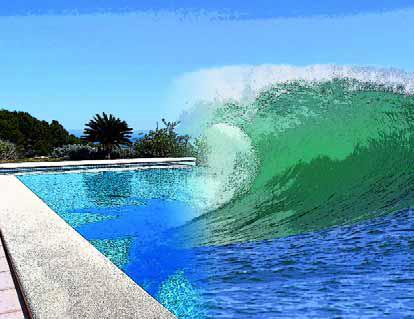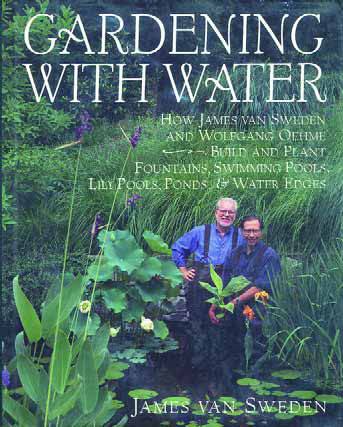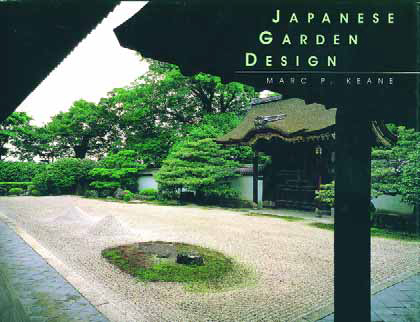ponds
I’ve always enjoyed spotting trends in watershaping, and I think I’ve found another that bears mentioning. This one first caught my eye on my daily walks through the neighborhood surrounding my home in Laguna Beach, Calif. I’ve always reveled in the creativity homeowners in this upscale seaside enclave apply in detailing their properties. Better still, it’s a place where no two homes are the same and almost everyone takes
When it comes to the myriad specialties of the world of watershaping, it's tough to think of any as broad as the one occupied by floating fountains: It's a category of systems that encompass flotation, illumination, spray systems, submersible pumps, connecting devices and land-based controls. On the one hand are the huge systems installed near the shores of lakes and rivers. These fountains can be monumental in size and visually dramatic - the sorts of popular landmarks that become tourist attractions and, often, community icons. On the other, there are the countless smaller floating fountains and aerators located in golf-course ponds and water hazards, in municipal-park and stormwater ponds, on private estates and institutional campuses and in the bays of larger bodies of water, either as single features or as groups. For 45 years now, our firm has been fortunate enough to have designed (and at times installed) floating fountain systems across this full spectrum, from the large and spectacular to the small and surprisingly subtle. Some have been purely decorative, while others have been totally
When it comes to the myriad specialties of the world of watershaping, it's tough to think of any as broad as the one occupied by floating fountains: It's a category of systems that encompass flotation, illumination, spray systems, submersible pumps, connecting devices and land-based controls. On the one hand are the huge systems installed near the shores of lakes and rivers. These fountains can be monumental in size and visually dramatic - the sorts of popular landmarks that become tourist attractions and, often, community icons. On the other, there are the countless smaller floating fountains and aerators located in golf-course ponds and water hazards, in municipal-park and stormwater ponds, on private estates and institutional campuses and in the bays of larger bodies of water, either as single features or as groups. For 45 years now, our firm has been fortunate enough to have designed (and at times installed) floating fountain systems across this full spectrum, from the large and spectacular to the small and surprisingly subtle. Some have been purely decorative, while others have been totally
If you've been paying any attention to the media lately, you may have noticed that watershaping is "in" as a big-time topic for television, books, magazines, newspapers and other forms of mass communication. Never in all my years as part of this industry can I recall a time during which the subject of beautiful custom pools, spas, fountains, ponds, streams and interactive bodies of water has won so much attention. It seems as if our society has finally caught on to the power, beauty and excitement of the art form many of us
The very existence of floating islands seems counterintuitive. Are there really chunks of earth solid enough to support our weight while drifting over the surface of a body of water? Can these floating masses even support the weight of trees, animals or even human dwellings? The fact is that floating islands do exist on six of the seven continents and sometimes on the oceans between. Some do have trees growing on them and do support the weight of humans (and even grazing cattle). Some are, in fact, hundreds of feet across and are called "home" by their inhabitants. These naturally occurring, waterborne vessels embody a fascinating subset of natural observation and are generally unknown - even though they
Many years have passed since I first saw pictures of China, but my desire to travel to the Giant of the Orient has never waned. In recent years, in fact, that interest grew ever stronger as I watched all the new information emerging from China as it has slowly opened itself to the Western world. I’ve been particularly fascinated by documentaries on the Yangtze River and The Great Dam that China is building to manage its floodwaters. This past spring, I visited China to see its amazing gardens with my own eyes and travel down the Yangtze through the fabled Three Gorges and the Lesser Three Gorges. I went seeking inspiration and came back with more than my quota of thoughts on the mysteriousness and tantalizing vagueness with which
Home to some of the world's greatest outdoor spaces, Kyoto, Japan, is a garden lover's heaven. If you make the trip, however, there is one garden that stands above all others - an aesthetic treasure, a nature-inspired garden masterpiece that is quite possibly the most beautiful place I've ever been. Owned by the Japanese imperial family, Katsura Rikyu (pronounced kah-tsu-rah ree-kyu) is an estate in Western Kyoto near the Katsura River. Rikyu means "detached palace," but that translation is a little misleading to English speakers, because the estate does not
Without any hesitation at all, I can say that Gardening with Water by James Van Sweden (Random House, 1995) is one of the most influential books on design that I've ever read. It's currently out of print, but it's certainly worth a hunt and can still be found on the Internet and in many technical bookstores. All through its 206 beautifully illustrated pages, Van Sweden carefully details his approach to designing with water - an element he says should be used in some form in every garden design. Along the way, he covers his firm's use of swimming pools (natural and architectural) as well as birdbaths, fountains, small watergardens and large ponds. It's an important book from a tremendously influential designer. In fact,
If you've been looking for a well-written, beautifully illustrated book that cracks the code when it comes to the design principles of Japanese gardening and introduces the full range of styles found in this ancient art form, you can't go wrong with Japanese Garden Design. Written by designer Marc P. Keane (and published by Charles E. Tuttle in 1996 but still in print), the book offers a detailed examination of this most influential of styles. For watershapers, landscape designers and
It's tough to keep the Big Picture in mind when the day-to-day grind seems relentless. Even so, it's important to take a step back from time to time and remind yourself of exactly




















